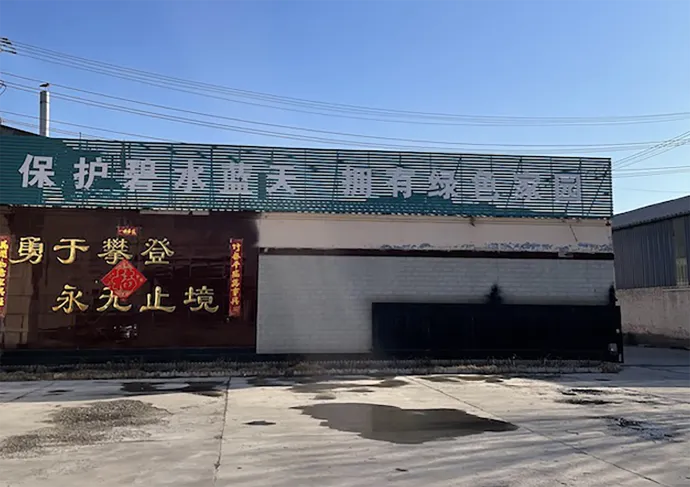- Afrikaans
- Albanian
- Amharic
- Arabic
- Armenian
- Azerbaijani
- Basque
- Belarusian
- Bengali
- Bosnian
- Bulgarian
- Catalan
- Cebuano
- Corsican
- Croatian
- Czech
- Danish
- Dutch
- English
- Esperanto
- Estonian
- French
- German
- Greek
- Hindi
- Indonesian
- irish
- Italian
- Japanese
- Korean
- Lao
- Malay
- Myanmar
- Norwegian
- Norwegian
- Polish
- Portuguese
- Romanian
- Russian
- Serbian
- Spanish
- Swedish
- Thai
- Turkish
- Ukrainian
- Uzbek
- Vietnamese
Aza . 26, 2024 02:27 Back to list
Alternative Insulation Solutions with Mineral Fiber Boards for Enhanced Energy Efficiency
Understanding Mineral Fiber Board A Sustainable Building Material
Mineral fiber board, often known as mineral wool board or rock wool board, is an innovative and sustainable material widely used in construction and insulation applications. Composed primarily of recycled natural and synthetic materials, this board offers excellent thermal and acoustic performance while contributing to environmental sustainability.
Composition and Manufacturing Process
Mineral fiber board is predominantly made from basalt rock, a natural material that is melted and spun into fibers. These fibers are then combined with various additives to enhance their properties. The resulting product is lightweight yet sturdy, making it ideal for a variety of applications. The manufacturing process is designed to minimize waste and maximize energy efficiency, aligning with the principles of sustainable development.
Thermal Insulation Properties
One of the standout characteristics of mineral fiber board is its exceptional thermal insulation capabilities. With a high R-value, it effectively reduces heat transfer, ensuring comfortable indoor temperatures year-round while lowering energy costs. By improving a building's energy efficiency, mineral fiber board contributes to reduced greenhouse gas emissions and a smaller carbon footprint. This is particularly important in a world increasingly focused on sustainable construction practices.
Acoustic Performance
In addition to thermal insulation, mineral fiber board excels in sound absorption
. Its porous structure allows it to diminish sound waves, making it a popular choice for walls, ceilings, and floors in residential and commercial buildings. This acoustic performance is particularly beneficial in auditoriums, schools, and open office spaces, where noise reduction is critical for performance and productivity. By creating quieter environments, mineral fiber board enhances overall well-being and comfort.mineral fiber board

Fire Resistance
Safety is paramount in construction, and mineral fiber board demonstrates impressive fire resistance. It is non-combustible and will not release toxic fumes when exposed to high temperatures. This characteristic not only contributes to building safety but also meets various building codes and regulations. As a result, mineral fiber board has become a preferred choice for fire-rated assemblies, further enhancing its appeal in commercial and industrial applications.
Environmental Benefits
The environmental benefits of mineral fiber board extend beyond its energy efficiency and fire resistance. Its production process typically utilizes recycled materials, significantly reducing waste and the demand for virgin resources. Furthermore, the longevity and durability of mineral fiber boards minimize the need for replacements, creating less material waste over time. Many manufacturers also aim for low embodied energy in their products, further supporting sustainability goals.
Applications
Mineral fiber boards are incredibly versatile, finding applications in insulation, partition walls, and ceiling tiles. They are commonly used in residential buildings, shopping malls, schools, hospitals, and factories. Their resistance to moisture prevents mold growth, making them suitable for areas prone to humidity, such as kitchens and bathrooms. Additionally, their aesthetic appeal allows them to fit seamlessly into various architectural styles.
Conclusion
In summary, mineral fiber board is a remarkable building material that combines sustainability with performance. Its thermal and acoustic insulation properties, fire resistance, and environmentally friendly production make it an excellent choice for modern construction projects. As the demand for sustainable building materials continues to rise, mineral fiber board stands out as a solution that not only meets the needs of builders and homeowners but also contributes positively to the environment. Adopting such innovative materials is crucial in paving the way toward a more sustainable and responsible future in construction.
-
Transform Interiors with PVC Gypsum Ceiling: A Stylish, Durable, and Moisture-Resistant SolutionNewsMay.19,2025
-
The Smart Interior Upgrade: Discover the Durability and Versatility of Gypsum Ceiling Access Panel SolutionsNewsMay.19,2025
-
The Smart Choice for Interior Design: Discover the Value of PVC Gypsum Ceiling SolutionsNewsMay.19,2025
-
Mineral Fiber Ceiling Tiles: The Smart Blend of Performance and AestheticsNewsMay.19,2025
-
Mineral Fiber Ceiling Tiles: The Superior Choice Over Gypsum for Sound and Fire SafetyNewsMay.19,2025
-
Mineral Fiber Ceiling Tiles: Eco-Friendly Strength and Style for Every CeilingNewsMay.19,2025







